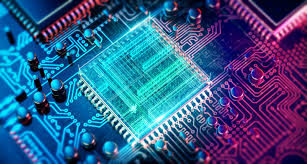
Post in Quantum Computing group on Facebook on 13th March, 2019
<Well I had a eureka moment last night just like Archimedes (and this by the way is why AI will never surpass human intelligence; they can’t sleep and dream; machines have no unconscious mind) I had a dream about these strange triangle shapes that were differentiating each other up to 10 times. Woke up and couldn’t make head nor tail of it. Got to thinking about it and realized they were <BRA KET> Dirac formalism and they were performing QM matrix calculations on themselves. I realized that a quantum computer performs complex QM linear algebra and matrix math to solve Schrodinger’s multi-particle time dependent wave equation at the speed of light. We gotta do away with all thought of binary numbers. Think solitons with geometric phase that represent Heisenberg Dirac Pauli matrices that are manipulated by holonomic quantum gates that may or may not use Boolean algebra to do complex calculus – differentiation integrals Fourier transforms etc. But wait – there’s more. A quantum computer can also solve Einstein’s time dependent field equations using 4×4 matrices that represent space-time vectors and Christoffel symbols. Eventually quantum computers will be able to simulate the universe. So the bottom line is forget about all this binary qubit stuff. Think linear algebra and matrix math and in the short term start thinking how you could make a quantum computer that will perform all the basic operations of MATLAB at the speed of light.>
Post in Quantum Computing on Facebook on 17th March, 2019
This paper Solving matrix equations in one step with cross-point resistive arrays involves memristors which basically uses the memory in electric current. Years ago Roger Penrose found quantum effects in microtubules. I posted a few days ago a paper about biophotons and microtubules “Our theoretical analysis indicates that the interaction of biophotons and microtubules causes transitions/fluctuations of microtubules between coherent and incoherent states.” I have also come across theory that these microtubules act as optic fiber that enables light signals to pass to the various sections of the brain that gives the brain phenomenal parallel processing capacity. Electrical signals are too slow for signals to pass to widely separated parts of the brain for parallel processing. This paper about solving matrix equations in one step also involves parallel processing. What I would like to propose is that these ‘quantum effects’ that Penrose found and these “transitions/fluctuations of microtubules between coherent and incoherent states” actually are a form of memristor for light similar to the memristors in electric current. Here is relevant sentence from an abstract of paper <To facilitate cytoplasmic remodeling and timely responses to cell signaling events, microtubules depolymerize and repolymerize rapidly at their ends.>
In vitro and in vivo analysis of microtubule destablizing kinesins
Post in Quantum Computing on Facebook on 19th March, 2019
Well I can’t help thinking that these ultrashort laser pulses are what I call solitons, and their ‘specially designed donut-shaped intensity profile’ has got something to do with their geometric phase!!! <As a rule of thumb, it can occur whenever there are at least two parameters characterizing a wave in the vicinity of some sort of singularity or hole in the topology; two parameters are required because either the set of nonsingular states will not be simply connected, or there will be nonzero holonomy.> A donut-shaped intensity profile = singularity or hole in the topology!?
<Using ultrashort laser pulses, scientists printed optical microdisk lasers in thin perovskite films coated above a glass substrate. The produced perovskite lasers can be used in photonic computers of the future and more widely—to provide the operation of photonic circuits in ultrafast data processing systems.
“We used femtosecond laser pulses with a specially designed donut-shaped intensity profile. The direct impact of a low-intense pulse train on a thin halide perovskite film allows to imprint the disks with a diameter down to 2 microns. The imprinted disks have smooth facets while the femtosecond pulse processing ensures minimized thermal impact of the perovskite>
Read more at: Microlasers for photonic computing of future
